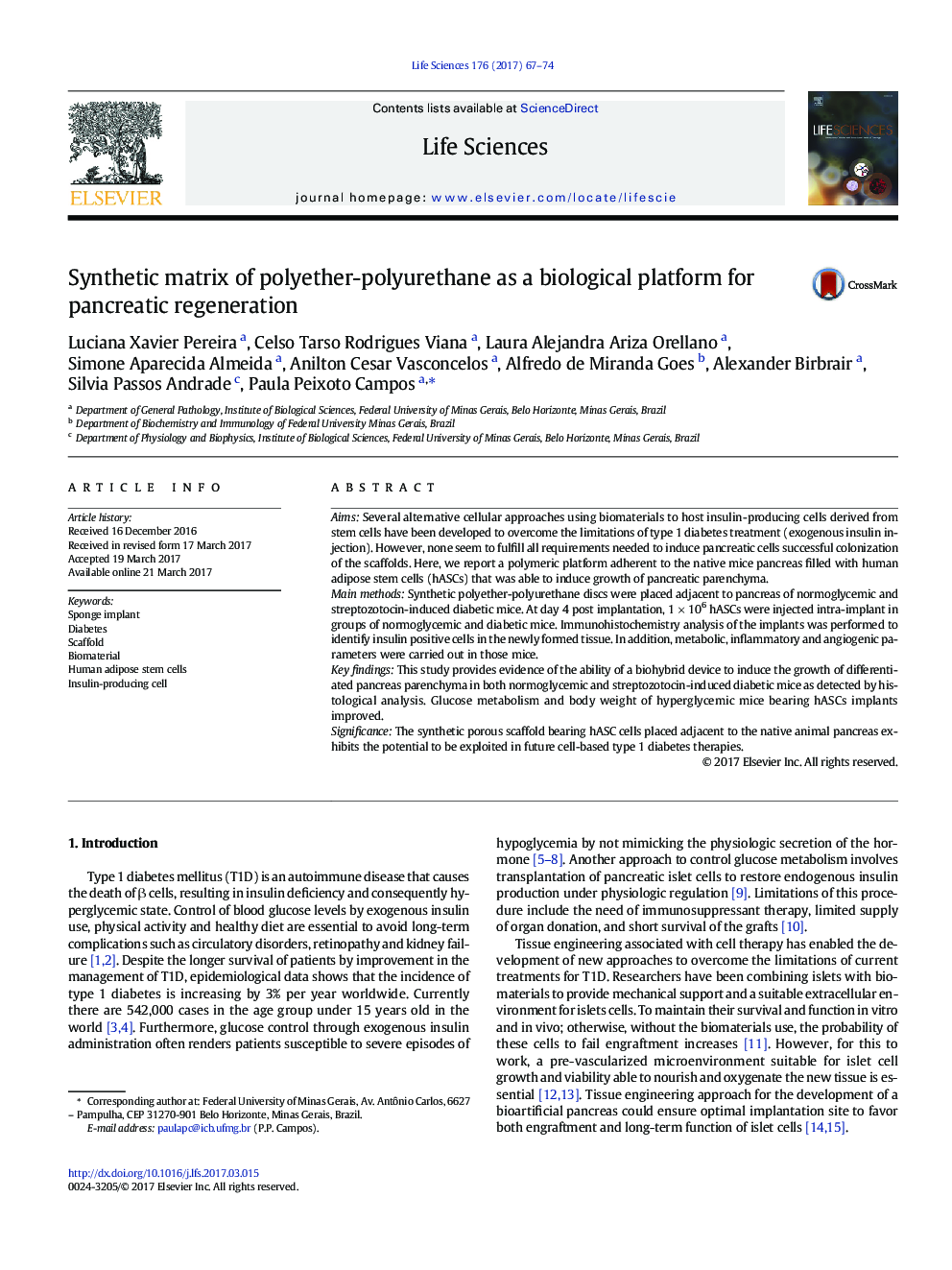| Article ID | Journal | Published Year | Pages | File Type |
|---|---|---|---|---|
| 5556939 | Life Sciences | 2017 | 8 Pages |
AimsSeveral alternative cellular approaches using biomaterials to host insulin-producing cells derived from stem cells have been developed to overcome the limitations of type 1 diabetes treatment (exogenous insulin injection). However, none seem to fulfill all requirements needed to induce pancreatic cells successful colonization of the scaffolds. Here, we report a polymeric platform adherent to the native mice pancreas filled with human adipose stem cells (hASCs) that was able to induce growth of pancreatic parenchyma.Main methodsSynthetic polyether-polyurethane discs were placed adjacent to pancreas of normoglycemic and streptozotocin-induced diabetic mice. At day 4 post implantation, 1Â ÃÂ 106 hASCs were injected intra-implant in groups of normoglycemic and diabetic mice. Immunohistochemistry analysis of the implants was performed to identify insulin positive cells in the newly formed tissue. In addition, metabolic, inflammatory and angiogenic parameters were carried out in those mice.Key findingsThis study provides evidence of the ability of a biohybrid device to induce the growth of differentiated pancreas parenchyma in both normoglycemic and streptozotocin-induced diabetic mice as detected by histological analysis. Glucose metabolism and body weight of hyperglycemic mice bearing hASCs implants improved.SignificanceThe synthetic porous scaffold bearing hASC cells placed adjacent to the native animal pancreas exhibits the potential to be exploited in future cell-based type 1 diabetes therapies.
Graphical abstractDownload high-res image (171KB)Download full-size image
